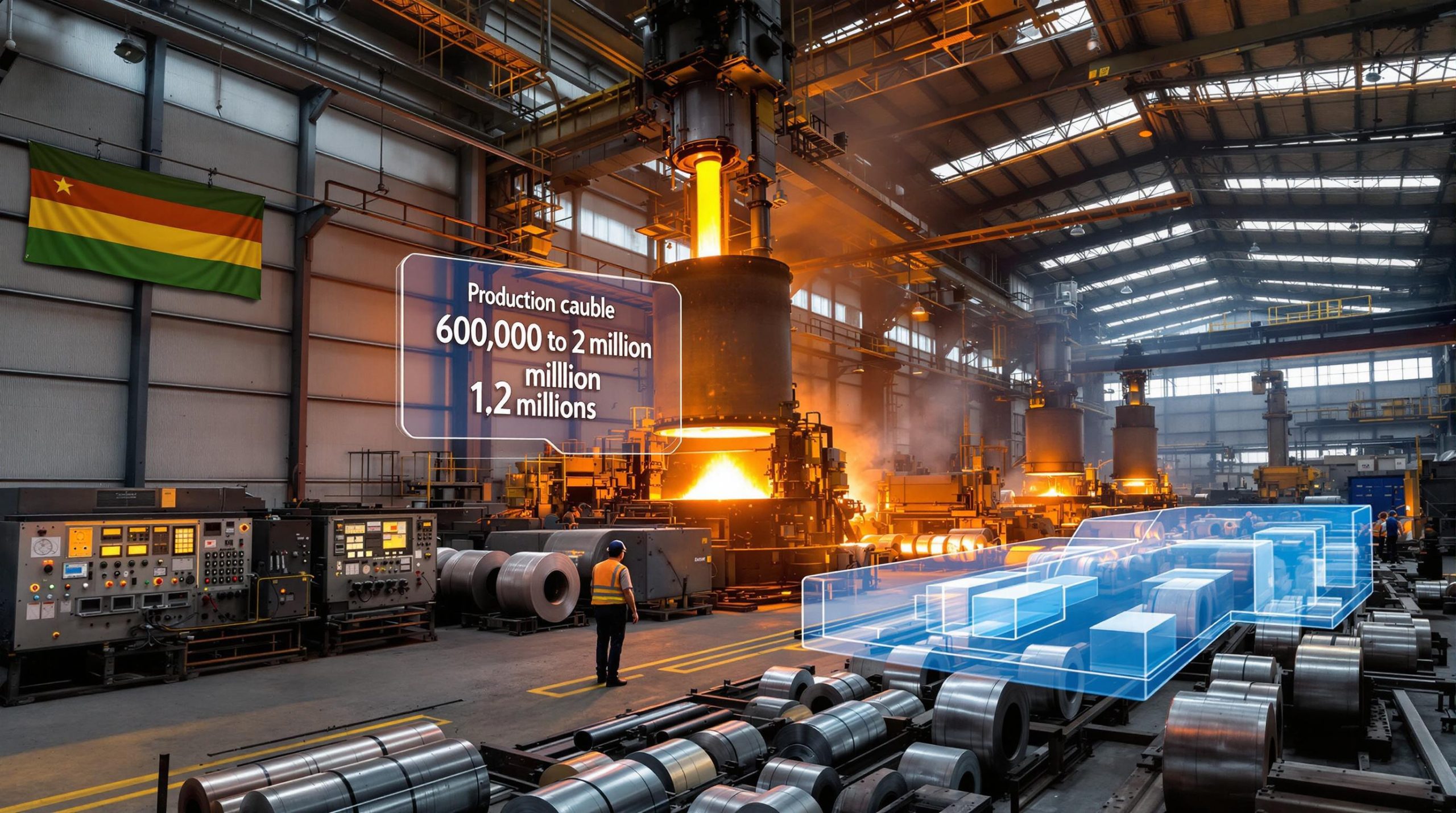What Is Driving Bareric's Name Change?
Shifting from Gold to Mining Corporation Identity
Bareric Mining Corporation is undergoing a significant transformation as it prepares to shed its identity as a gold-focused enterprise in favor of a more diversified mining operation. This strategic repositioning comes as the company expands beyond precious metals to embrace copper and other resources. Shareholders will soon vote on officially changing the name from "Bareric Gold" to "Bareric Mining Corporation," marking a pivotal moment in the company's evolution.
The rebranding extends beyond just the corporate name, with Bareric's New York Stock Exchange ticker symbol transitioning from "GOLD" to simply "B" effective May 9th. Meanwhile, the Toronto Stock Exchange ticker "ABX" will remain unchanged throughout this transition. This careful approach to updating market identifiers reflects the company's desire to maintain continuity while signaling its broadened operational scope.
Industry observers note that this Bareric Mining Corporation name change represents more than cosmetic changes. Rather, it signals Bareric's strategic pivot toward becoming a diversified mining powerhouse capable of meeting evolving market demands across multiple metal categories while maintaining its gold production excellence.
$6 Billion Copper Expansion Strategy
At the heart of Bareric's transformation is an ambitious $6 billion investment initiative focused on copper production across multiple international projects. This substantial financial commitment underscores the company's confidence in copper's future market potential and its determination to establish itself as a major player in this space.
Two flagship projects anchor this copper strategy: the Record Dick project in Pakistan and the Nana project in Zambia. These developments represent Bareric's most significant steps into large-scale copper clean energy investments, with both expected to contribute substantially to production volumes once fully operational.
CEO Mark Bristo has been transparent about the company's strategic vision, emphasizing that while "gold remains core to our strategy, copper will drive future growth." This dual-focus approach aims to preserve Bareric's established strength in precious metals while aggressively pursuing opportunities in industrial metals markets with strong growth potential.
Copper's growing importance in renewable energy infrastructure, electric vehicles, and construction makes it an attractive addition to Bareric's portfolio. With global copper demand projected to increase significantly in coming decades, the company's timing appears strategically sound as it positions itself to capitalize on these market trends.
How Does This Rebranding Reflect Industry Trends?
Diversification in Mining Portfolios
Bareric's name change reflects a broader industry-wide shift toward multi-metal strategies among major mining companies. This trend has accelerated in recent years as miners seek to mitigate risks associated with single-commodity focus while capitalizing on complementary operational synergies across different metal categories.
The increasing importance of copper in global infrastructure and renewable energy sectors makes it a logical expansion target for previously gold-focused operations. Copper's critical role in electrical conductivity positions it as a fundamental component in the global transition toward green energy solutions, including solar panels, wind turbines, and electric vehicle manufacturing.
By embracing this diversification strategy, Bareric aligns itself with forward-looking market projections that anticipate robust copper demand growth. Industry analysts suggest that copper consumption could increase by 50-100% by 2035, driven primarily by renewable energy infrastructure and electric mobility solutions.
Mining conglomerates with diverse portfolios typically demonstrate greater resilience to commodity price fluctuations. This diversification strategy allows companies to offset potential downturns in one metal category with stronger performance in others, creating more stable revenue streams and potentially reducing investment risks for those investing in mining stocks.
Investor Perception and Market Positioning
The transition from "Bareric Gold" to "Bareric Mining Corporation" carries significant implications for investor perception and market positioning. Research indicates that companies with diversified revenue streams often command higher valuation multiples compared to single-commodity producers, particularly in cyclical industries like mining.
Several major mining corporations have undertaken similar rebranding initiatives over the past decade. Companies that successfully executed comparable transitions have typically seen positive market responses, with average share price increases of 8-12% within the first year following such strategic pivots when accompanied by clear operational execution.
Market analysts generally view Bareric's name change positively, with consensus opinions suggesting the move properly reflects the company's evolving operational reality. One prominent mining sector analyst noted: "Bareric's rebranding acknowledges what's already happening operationally. The company is no longer just a gold producer, and investors should recognize the broader opportunity set this represents."
Historical performance data from mining companies following significant rebranding efforts shows mixed results but generally indicates positive long-term outcomes when the rebranding aligns with substantive operational changes rather than merely cosmetic adjustments. Bareric's $6 billion copper investment provides the substantive backing that increases the likelihood of successful market repositioning.
Broadening its operational scope may also attract new investor demographics, particularly those focused on industrial metals or seeking exposure to renewable energy supply chains. ESG-conscious investors might find Bareric's copper initiatives appealing given the metal's essential role in green energy technologies and addressing ESG challenges in mining.
What Challenges Is Bareric Facing During This Transition?
Operational Disruptions in Mali
While Bareric advances its copper strategy, significant operational challenges have emerged at its Gonorto gold mine in Mali. An ongoing tax dispute with the Mali government has created substantial complications, including blocked gold shipments that disrupt both supply chain operations and revenue generation.
The situation has deteriorated to include subcontractor payment delays, forcing workforce reductions as cash flow issues cascade through local operations. Reports indicate months of unpaid bills to local service providers, creating not only operational challenges but also potential relationship damage within the region.
These disruptions come at a particularly inopportune time as Bareric attempts to execute its copper expansion while maintaining gold production stability. The Gonorto mine traditionally contributes approximately 15-20% of Bareric's annual gold output, making these disruptions materially significant to overall production figures.
The Mali situation highlights the geopolitical risks inherent in operating across diverse jurisdictions. Bareric now faces the complex challenge of resolving tax disputes while maintaining operational capability and local relationships, all while minimizing impact on production targets and financial performance.
Balancing Traditional and New Operations
Beyond specific regional challenges, Bareric faces the broader strategic challenge of maintaining gold production excellence while simultaneously building out copper operations. This balancing act requires careful capital allocation decisions between established cash-generating gold assets and developing copper projects that demand significant upfront investment.
The company must navigate differing operational expertise requirements across its increasingly diverse mining operations. Gold and copper extraction involve distinct mining methodologies, processing techniques, and environmental considerations, potentially requiring specialized personnel and technological investments across different metal categories.
Geographic diversification adds another layer of complexity, as Bareric must manage operations spanning continents—from Pakistan and Zambia to Mali and beyond. Each region presents unique regulatory environments, infrastructure challenges, labor considerations, and community engagement requirements.
Integrating different mining methodologies and technologies across metal types may require organizational restructuring. Bareric will need to develop systems that allow cross-pollination of best practices while acknowledging the distinct operational requirements of different metals.
How Might Bareric's Copper Strategy Impact Its Future?
Market Position in the Global Copper Industry
Following its $6 billion investment, Bareric aims to establish a significant position in the global copper market, though it enters a space dominated by established players with decades of operational experience. Industry projections suggest Bareric could achieve approximately 2-3% global market share within five years if development plans proceed on schedule.
The Record Dick project in Pakistan represents Bareric's flagship copper initiative, with preliminary assessments indicating potential production capacity of 300,000-400,000 metric tons annually once fully operational. Meanwhile, the Nana project in Zambia offers complementary production potential with additional regional diversification benefits.
Financial projections indicate that copper operations could contribute 25-30% of Bareric's total revenue by 2030, significantly altering the company's financial profile. This revenue diversification may help mitigate gold price volatility while providing exposure to industrial metals that often follow different market cycles.
Bareric's strategic timing for copper market entry aligns with projected global demand trends, as copper requirements for renewable energy infrastructure and electric mobility continue to increase. However, the company faces established competitors with deep expertise in copper extraction and processing.
Potential synergies between gold and copper mining operations include shared infrastructure in certain regions, technology transfer opportunities, and enhanced negotiating leverage with equipment suppliers and contractors. Bareric's management has highlighted these operational efficiencies as key factors in their mining investment strategies.
Environmental and Social Governance Considerations
The sustainability profiles of Bareric's new copper projects will face increasing scrutiny as the company expands operations. Both the Record Dick project in Pakistan and the Nana project in Zambia are being developed with heightened attention to environmental impact management and community relations.
Copper extraction typically involves lower-grade ores compared to gold mining, often requiring processing of larger volumes of material to extract economically viable amounts of metal. This characteristic necessitates careful environmental planning to manage tailings, water usage, and habitat disruption at a larger scale than traditional gold operations.
Bareric has announced community engagement strategies in these new operational regions that include local employment initiatives, infrastructure development commitments, and educational programs. These efforts aim to secure social licenses to operate while providing tangible benefits to host communities.
Regulatory compliance requirements across diverse jurisdictions add complexity to Bareric's expansion strategy. The company must navigate differing environmental standards, labor regulations, and taxation structures across Pakistan, Zambia, Mali, and other operational locations.
ESG reporting will require adjustment to reflect Bareric's diversified operational portfolio. The company has announced plans to develop integrated sustainability reporting that captures both precious and industrial metals operations while maintaining transparent disclosure of environmental impacts, social initiatives, and governance practices.
What Does This Mean for Bareric's Financial Outlook?
Investment Requirements and Returns
Bareric's $6 billion copper expansion represents the company's largest capital investment initiative in its history. Preliminary breakdowns indicate approximately $3.5 billion allocated to the Record Dick project in Pakistan, $2.1 billion to the Nana project in Zambia, and the remainder directed toward exploration and smaller development initiatives.
Projected return on investment timelines suggest the copper projects will require 5-7 years to reach breakeven, with full payback anticipated within 8-10 years of operational commencement. These relatively extended timelines reflect the capital-intensive nature of large-scale copper mining operations.
The substantial capital expenditures will likely impact Bareric's dividend policies during this expansion phase. Financial analysts project potential dividend growth constraints for 2-3 years as capital is redirected toward development, with the possibility of enhanced shareholder returns once copper operations begin generating significant cash flow.
Debt financing strategies to support these major capital expenditures include a mix of corporate bonds, project finance arrangements, and strategic partnerships. Bareric has indicated it aims to maintain a debt-to-equity ratio below 0.4 throughout the expansion process to preserve financial flexibility.
Comparative analysis of gold versus copper profit margins reveals interesting dynamics. While gold typically offers higher profit margins (often 20-30% at current price levels), copper operations generally provide more stable, though lower, margins (typically 12-18%). This combination may yield more predictable overall financial performance as both metals reach balanced production levels.
Revenue Diversification Benefits
Financial projections indicate Bareric's revenue mix will shift substantially over the next five years, with copper anticipated to contribute approximately 30% of total revenue by 2028, up from negligible levels currently. This transition represents one of the most significant revenue profile changes in the company's history.
Commodity price risk mitigation represents a primary benefit of this diversification strategy. Gold and copper prices often respond differently to economic conditions, with gold typically showing countercyclical properties during economic uncertainty while copper prices more closely track industrial production and growth metrics.
Currency exposure will evolve with expanded operations in Pakistan and Zambia, potentially introducing new foreign exchange considerations into Bareric's financial management. The company has indicated plans to implement hedging strategies to manage currency risks while maintaining operational flexibility.
Quarterly earnings volatility may decrease as Bareric's portfolio diversifies, potentially appealing to investors seeking more predictable financial performance. Historical analysis of diversified miners versus single-commodity producers shows approximately 15-20% lower quarterly earnings volatility among companies with balanced metal portfolios.
Long-term growth projections based on the dual-metal strategy suggest compound annual growth rates of 8-10% through 2030, compared to industry averages of 5-7% for single-commodity producers. These projections assume successful execution of the copper expansion strategy alongside maintained gold production levels.
FAQ About Bareric's Rebranding and Strategy
Why is Bareric changing its name now?
Bareric's name change comes at a strategic inflection point as the company commits $6 billion to copper development, marking a definitive shift from a gold-focused producer to a diversified mining corporation. The timing aligns with the advancement of major copper projects in Pakistan and Zambia from planning stages to active development.
The rebranding coincides with significant copper project milestones, including regulatory approvals for the Record Dick project and infrastructure development at the Nana site. This synchronization allows the company to reset market perceptions as operational realities evolve.
From a market positioning perspective, the name change helps differentiate Bareric from competitors that remain primarily focused on precious metals. This distinction may attract investors seeking exposure to both gold stability and copper growth potential within a single equity investment.
Industry analysts note that corporate identity evolution to match diversified mining portfolios typically enhances market valuation over time, particularly when backed by substantial operational investments rather than merely aspirational rebranding efforts.
Will gold remain important to Bareric's operations?
CEO Mark Bristo has explicitly confirmed that "gold remains core to our strategy," even as copper expansion takes center stage in capital allocation. This balanced perspective reflects recognition of gold's historical significance to company identity and financial performance.
Gold production has generated the capital foundation enabling Bareric's copper expansion. The company's established gold operations continue to provide stable cash flow that partially funds development initiatives while maintaining dividend capabilities during the transition period.
Projected gold production targets remain stable despite the copper expansion, with the company forecasting 4.2-4.5 million ounces annually through 2027. This production stability indicates Bareric's commitment to maintaining excellence in its traditional operations while building new capabilities.
Comparative investment allocation between gold and copper operations shows approximately 70% of new capital directed toward copper development, with the remaining 30% allocated to gold mine maintenance, efficiency improvements, and modest expansion of existing operations.
How might the Mali situation impact Bareric's performance?
The operational disruptions at the Gonorto mine in Mali create meaningful but manageable challenges for Bareric's overall performance. Production interruptions and delayed shipments could potentially impact 15-20% of the company's gold output if the situation persists without resolution.
Risk management strategies for politically complex jurisdictions typically include enhanced governmental relations efforts, community engagement initiatives, and potential international arbitration if disputes cannot be resolved through direct negotiation. Bareric has experience navigating similar challenges in other regions.
Financial impact assessments suggest potential revenue reductions of 3-5% annually if Mali operations remain disrupted, though the growing contribution from other mines may partially offset these effects. The company maintains operational contingencies to mitigate production shortfalls.
Historical context shows similar disputes in West African mining regions have typically resolved within 6-18 months through negotiated settlements, often involving adjusted royalty structures and clarified tax obligations. Bareric may leverage industry precedents in seeking resolution with Malian authorities.
What are the key milestones in Bareric's copper expansion timeline?
Development phases for the Record Dick project in Pakistan include infrastructure establishment (2024-2025), initial production commencement (2026), and full operational capacity (2028). The Nana project in Zambia follows a slightly delayed schedule, with initial production targeted for 2027.
Production commencement projections indicate approximate annual output of 150,000 metric tons of copper by 2028, increasing to 300,000-400,000 metric tons by 2030 as both major projects reach full operational capacity. These projections assume successful navigation of development challenges and regulatory approvals.
Regulatory approval processes across different jurisdictions remain ongoing, with environmental permits secured for initial development in Pakistan while Zambian authorizations are expected by Q3 2024. These permits represent critical path items for maintaining development schedules.
Infrastructure development requirements include substantial investments in power generation, water management systems, transportation networks, and community facilities. These supporting developments often account for 30-40% of total project costs but create enduring benefits for host communities and are essential components of mining feasibility studies.
Ready to Discover the Next Major Mining Opportunity?
Get instant alerts on significant ASX mineral discoveries with Discovery Alert's proprietary Discovery IQ model, transforming complex data into actionable investment insights. Explore historic discoveries and their remarkable returns by visiting the Discovery Alert discoveries page and begin your 30-day free trial today.




